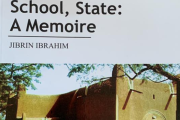The world can only guess as to what could be going on in presidential palaces, residence of prime ministers and leaders of the most important actors in the aftermath of the killing of Qassem Soleimani, the Commander of the strike force of the Iranian military. If he choked on a bone at dinner or suffered from stress induced death, it would not have generated the headlines his death has generated. But that is not what happened.

Russian and Iranian leaders: might they have spoken on the ‘hotline’?
As the Russian authorities put it, Soleimani was killed by another country that has not had cordial relations with Iran since 1953 and in the territories of a third country that had no inputs into the making of the killing. The Washington post suggests that no one appears to know why Donald Trump gathered his security chiefs and suddenly wanted Soleimani to be taken out even when the security chiefs could anticipate the consequences.
It is nearly common knowledge that Iran’s response is unlikely to be other than asymmetrical warfare. Unless the key pressure bearers in the international system today such as China, Russia and probably the EU successfully persuades Iran against retaliation, then as Foreign Affairs is speculating, the world might be in trouble for the actions of a Donald Trump. Asymmetrical warfare is not about a crippling or surgical retaliation but dragging into and bleeding an enemy. It is the weak person’s only way of hitting back. Anybody with capacity for reasoning will know that Iranian asymmetrical tactics against the US would have too many collateral outcomes even for people who know nothing about what is at stake.
The assumption is that stability guarantors of the international system are already at work, ensuring that the system escapes destabilisation because that would not be in anybody’s interest. In other words, the hotlines must be busy as the telephone offers the fastest channel for putting agency to work. Who would be calling who? Anybody can guess this just as no one can be sure but this MUST be happening between key world leaders. This is the back channel as opposed to the open channel in diplomacy. It is more personal, more informative because it is discursive and it is quicker in effect.
Next is the media, working both for peace and also for war, consciously as well as unconsciously. The market pressure, the autonomy of mind of the average journalist and the banality of nationalism account for this simultaneous complicity in peacemaking and war promotion. Above all, the meaning that readers make of headlines has very little or nothing to do with the text producers but more to do with where the reader stands on an issue. An outwardly innocent headline could end up being provocative to someone already boiling over from a fixed position on the issue.

On top of the situation or has boxed himself into a tight corner?

What next after issuing a calming public statement?
The only thing is that Donald Trump is not coming off well in the media even in American media on this issue. In fact, as far as Foreign Affairs is concerned, there are no good options. In relation to Trump, the magazine which many reckon with as the intellectual pillar of US foreign policy says that “At each decision point, Trump will have only bad options to choose from. He has left himself with no diplomatic channels, a divided international community, and a skeptical Congress”. In the world of visuals and images, the media’s role is enhanced. It is thus one arena to watch carefully in terms of where the world might be heading on this.
Closely related to the media is the knowledge sector. The concepts they are coming up with or may soon come up with can be decisive in terms of what the killing of Soleimani means. Is it state terrorism posted as preemption or just international lawlessness or an act of war or just show of power or what? In fact, it is this question that is being settled now. Right now, no one meaning is hegemonic yet. This is what brings in concept merchants in the universities, think tanks and research centres, especially those dealing with ‘Virtual/Virtuous Security and even old style Strategic Studies.
The official channel must also be at work. That is diplomacy. It will not be surprising if some diplomatic model of diffusing the tension emerges a few days hence, from God knows where. There is no knowing what such model might be but diplomacy is a tested space in containment.
The global civil society is to be feared. The ‘Stop War’ campaigners, for instance, are certain to unfold, depending on where they see the global mood swinging in terms of war.
Are there people with influence to save the world from the pains of another war, including an even more dangerous asymmetrical response from Iran? Who are those people and what might they be doing at this point?




























